
Taking our time may be contrary to our natures, but we’ve been to Hawaii before and so we are committed to this visit to go slow. Six years ago, we couldn’t be blamed for thinking our time on the islands might be our first and last, and so we rushed to see as much as we could. We’re certainly older but probably no wiser (besides being Wise), still, we have to try and make the most of our limited resource of time and immerse ourselves as deeply as possible so our memories might form deep roots.
Caroline and I are in some ways like the water lilies in this photo or would like to be. Meaning that while we find beauty on the surface and can explore delight in the watery garden floating on still-glistening water, our connection to even a muddy foundation is held fast. And though our roots are immovable regarding who we are in our essence, we are like the bloom standing tall over the water below, catching a breeze that has us waving in the wind so we may see more of the world we live in and upon.

If we never moved, how could we be here to encounter flowers such as this? The non-sentient plant will send out its seed, and with favorable conditions and a vast enough space across time, it might spread its species to faraway corners. That plant, though, will never know where its descendants ultimately ended up. We humans, on the other hand, are sentient beings that briefly have a near-total awareness of our place, and with our ability to recollect our past, we can choose to live a life full of experiences that define something more than mere existence at the moment. We, too, will never know where our descendants may go, but we can know where we have been and what we’ve learned.

This doesn’t require us to go to Hawaii to gather these lessons, but it does mean we have to look closer at the world around us. Not everyone is as fortunate as Caroline and I or maybe as curious either; this, though, doesn’t inhibit people from at least becoming aware of a lack of curiosity and then cultivating it. Slow down, read about things you know nothing about such as the history of Alexander von Humboldt or the ocean crossings of Thor Heyerdahl. These are only examples of something you may not yet have heard about, but these people and what they found played important roles in our perspectives of how people have come to relate to our Earth. The same goes for others who ventured out on unsure footings either on the surface of our planet or in the depths of their mind. Just because there’s nothing below you but a thin leaf of support doesn’t mean that the view of the world from above is nothing less than spectacular. First, you must take the risk of exploring areas and things you never knew existed.
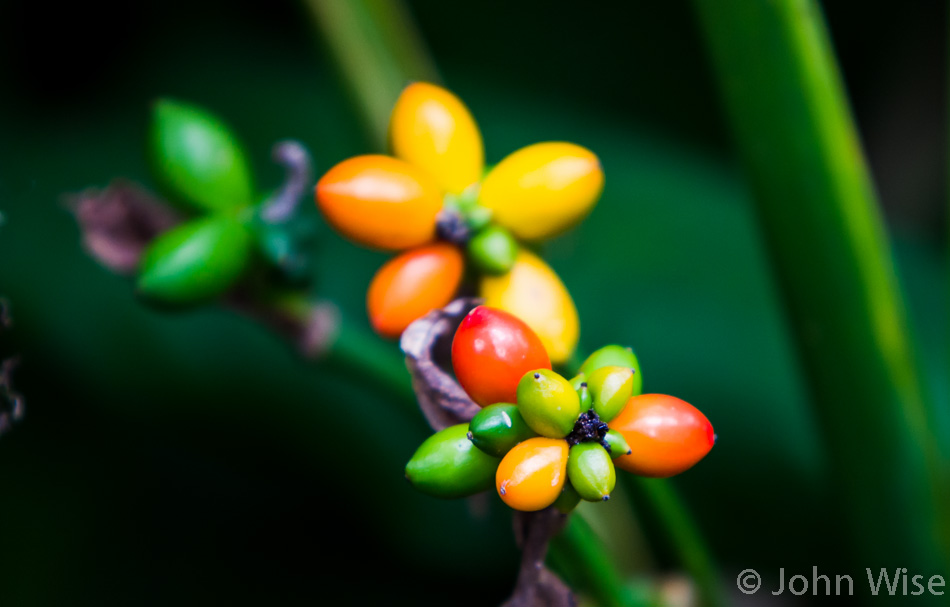
We are exploring the Waimea Valley Botanical Garden and we’re taking our time to do it. The Waimea Valley here on the North Shore of O’ahu is what is known as an ahupua‘a. That somewhat difficult word to pronounce for non-Hawaiians is a pie-like slice of land that stretches from the interior of the island to shore and was considered to have everything required for a group of Hawaiians to properly live and thrive. In the highlands were medicinal plants and the woods required for dwellings and watercraft. Below that is farmland for bananas, taro, breadfruit, sweet potato, and coconut. At the sea, an abundance of fish was readily available for the early Polynesians who discovered the islands to enjoy their island paradise. Today, the Waimea Valley is 1,875 acres of land, of which the botanical garden occupies 300 acres. Within this corner of the island, there are over 5,000 tropical and subtropical plants. We plan to see each and every one of them.
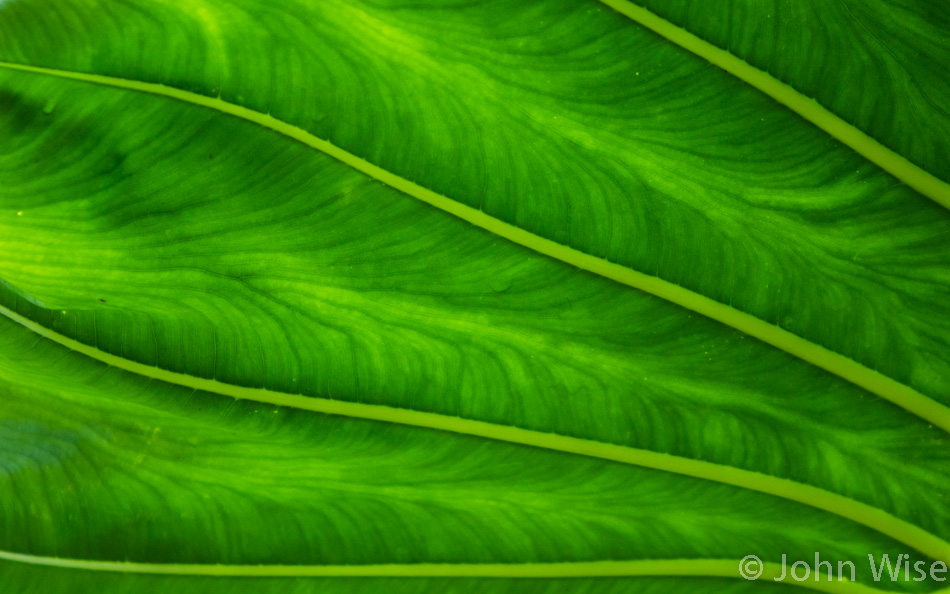
On our second visit to the biome known as a tropical forest, we became more familiar with one of the major habitats we humans have populated. To date, Caroline and I have visited six of the eight major biomes, and although we were close to a boreal forest while we were in Quebec last year, we have yet to visit one; the same goes for the tundra. The list of habitats is as follows: tundra, taiga (also called boreal forest), temperate deciduous forest (Eastern United States), scrub forest (called chaparral in California), grassland (the Great Plains), desert (we live in one of the major desert types of which there are four), tropical rain forest (right here on Hawaii), and temperate rainforests such as the ones we visit in Oregon and Washington.
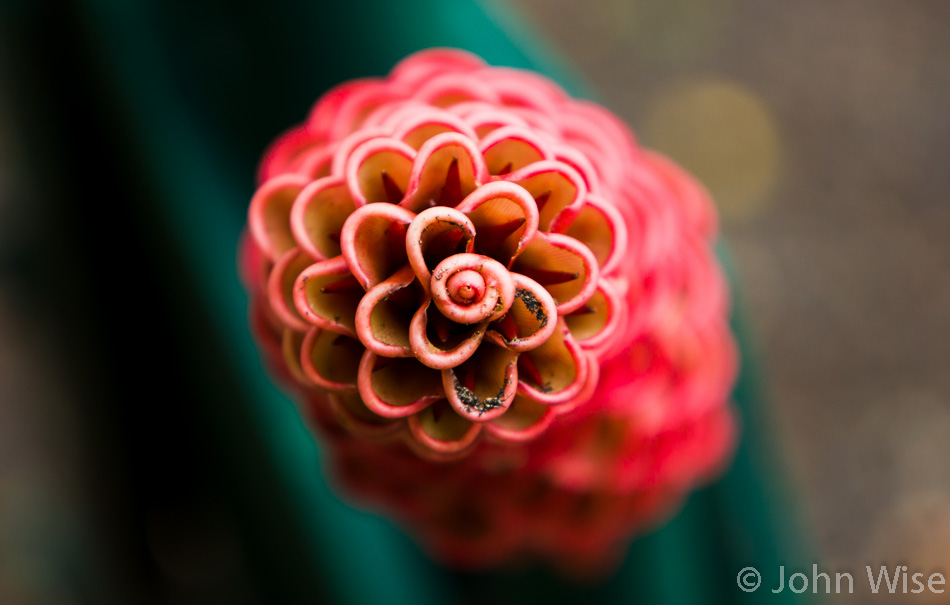
Champagne beehive ginger, just the name, makes you want to sample it. Maybe the gift shop has some beehive ginger candy? Nope, other than an infrequent food item and some alleged medicinal use there’s not much the plant offers at this time other than it’s beautiful. Hmmm, when I think about it this way, it’s much like the majority of life, and I guess that’s good enough.

You know you always wanted to go to Heliconia and back. You can’t, though, because Heliconia isn’t a place, and it’s not found in Arizona either. This tropical plant is also known as lobster-claw, toucan peak, wild plantains, or false bird-of-paradise. The white seeds in the claw are not ripe yet; when they are, they will turn a dark blue-purple, which drives the birds wild; well, maybe that’s an exaggeration, but it sure sounds dramatic.
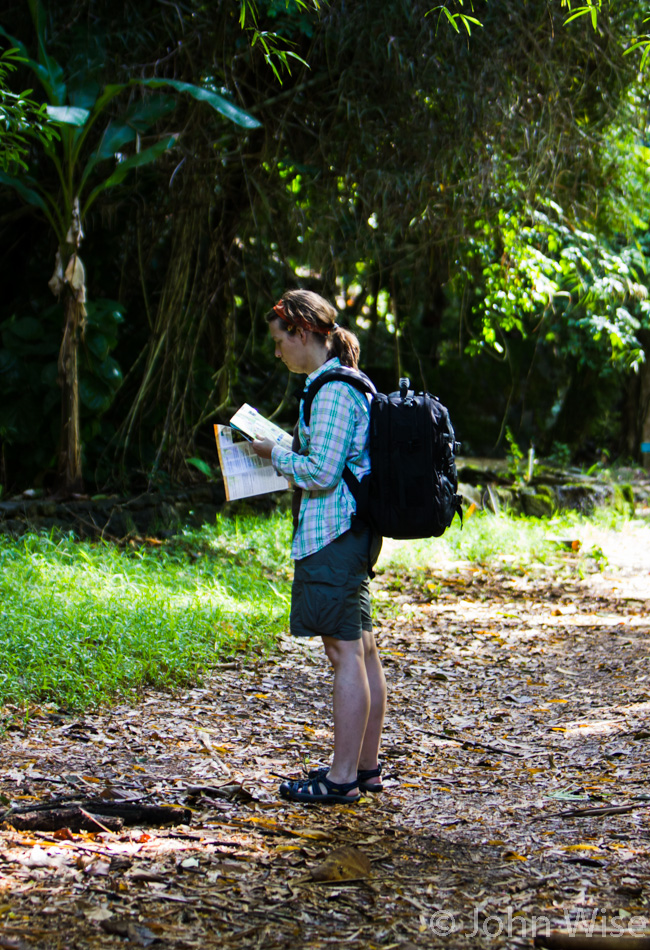
This is a picture of a tropical donkel. Yes, you read that right, part donkey, part camel. You’ll notice the large protruding hump on its back, which is unique to the female of the species. Darwin once speculated that the male of the species is too lazy to carry his own shit and that, somehow, it convinced the female to adapt and evolve this permanent growth on its back where the male could store the things he couldn’t be bothered to carry. The two enjoy a symbiotic relationship where the ass and donkel are able to move through the environment with everything needed for survival carried by the docile female.

I’m not even going to try and tell you what this is because I have no idea, but it looked amazing.
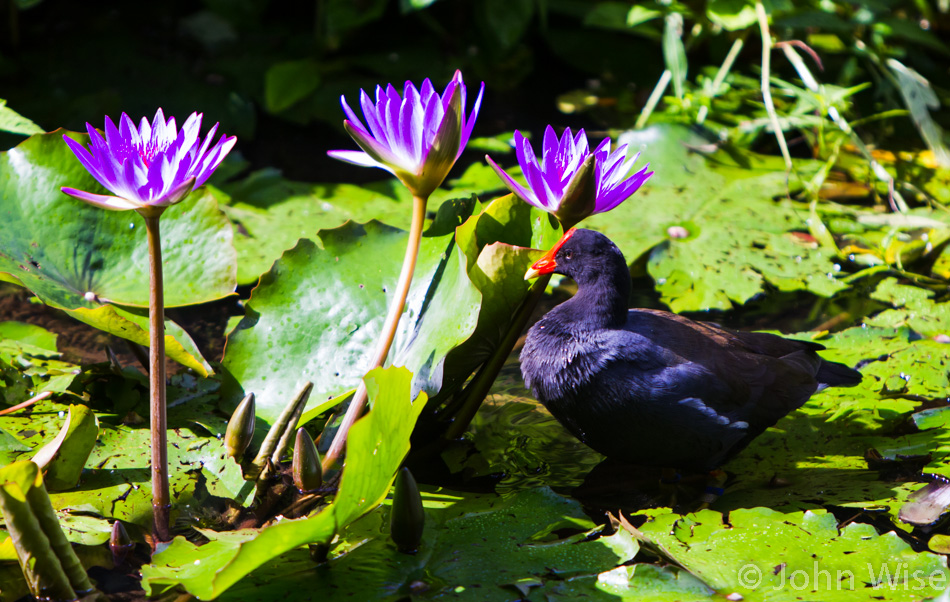
It’s already a lucky day just being on O’ahu, but here we are getting to see the endangered Hawaiian Moorhen, also called `alae `ula in Hawaiian. Not only is it endangered and rare, but the bird is typically quite secretive and will dash for cover at any disturbance. There are an estimated 250 to 450 of the birds left and we had this opportunity to see one with our very own eyes. So, while anybody could have watched the North Shore surfing competition live or on TV at some point, few will ever be witness to this bird’s existence.

Anybody who has talked with me will know that I just have to go where I’m going next. Look at the beauty of this flower and how the contrast of it standing out against the green background makes it all the more striking. Now imagine the people who once populated these islands being priced out of their lands because wealthier folks drive them out. The Hawaiian islanders were like this flower against a green backdrop; they stood out and were free to be wherever they popped up and found themselves on their ancestral lands. Revisionist histories of warlike people with a rich tradition of the warrior are, in my opinion, a bullshit cockamamie romanticized story that is used by conquering douche-bags to justify why the savages had to be contained. It is us white people who wanted control and wealth in addition to purging the earth of species and peoples that were considered inferior. Now, we know that we took their lands by sleight of hand, but even with this knowledge, there is no way in heaven that the 50th state of America will be allowed to return to its sovereign roots. I’d like to say that at least Native Americans were given reservations, but for the most part, we isolated them on lands we felt near worthless with little to harvest, mine, or steal from to build our own wealth; our ancestors kept that for themselves. In some way, this flower and the bird above have more rights and freedoms than the average indigenous Hawaiian. Paradise loses some of its luster should you look too deeply because, under the surface, you’ll often find muck.
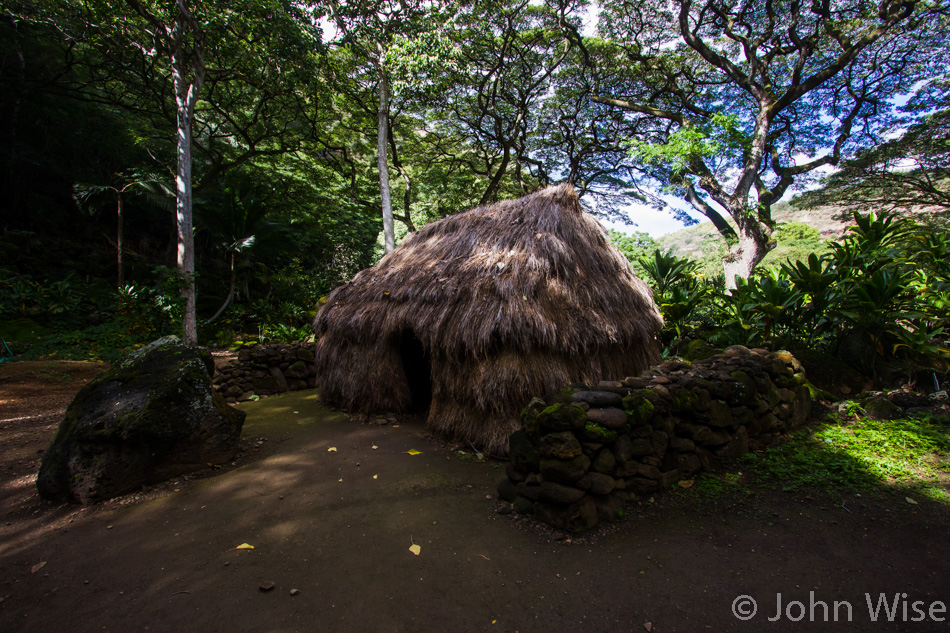
The traditional dwellings in Waimea Valley are mostly not accessible by the general public, but a few can be visited such as this one. The valley here is a sacred site to Hawaiians where many high-ranking people would have lived and where religious ceremonies were practiced. At one time, the area was referred to as the Valley of the Priests. Prior to the protection of the area, the valley was owned by a land developer who was also responsible for the Kahala Hilton, which today is known as Kahala Resort and will cost you an arm and a leg to stay at.

This may forever be my favorite canopy photo I’ll have ever taken. The fractal nature of the trees and near-even distribution of leaves with just enough branches to paint the appearance of arteries stretching to the sky to harvest the nutrient of sunshine delights my eyes and brings back fond memories of amazement.
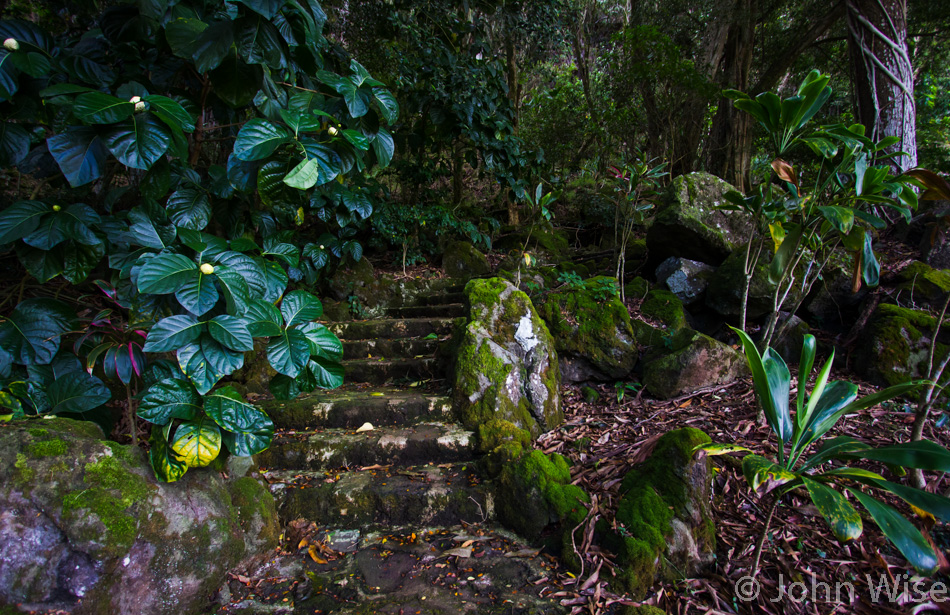
There’s much to learn and an equal amount to see here at Waimea Valley Botanical Garden. Time and hunger are pushing us towards the exit, but visiting has been a treat. We are well aware that being next to a pool, on a beach, or being seen in the coolest watering hole or a trendy restaurant means more to the average visitor to Hawaii, but we are not those kinds of visitors. Sadly it is the image of the buffoon tourist and their conformist ideas of what a vacation is that drives a larger amount of money into an economy. Caroline and I can only hope that places like this continue to draw in enough people to maintain their upkeep and pay staff so wildlands remain available. The places of history should always be cherished shrines where humanity strives to preserve our heritage so future generations can also celebrate those who have come before them.

I shot 132 images here in Waimea Valley and have shared just 15. There were another half dozen I would have liked posting, but already, this is a lot of plants and none of the images one has come to expect from a visit to Hawaii. As we are leaving I look over at this curious-looking bird and wonder what it’s thinking and then realize maybe it’s just listening for the movement of insects so it can grab a meal, like we are about to do.

Fortunately for us, we don’t have to put an ear to the asphalt and try to pull a bug out of crack to satisfy our hunger. Instead, we spot a food truck called Nakai Saimin and decide it has our flavor of gourmet written all over it. Their claim to fame on their sign is “Fresh Homemade Noodles,” and so that’s what Caroline opts for; I went for the Loco Moco. For whose dish was better, I think it was hands down mine. Loco Moco is a relatively simple dish of a hamburger patty on white rice topped with an egg and brown gravy, but like so many “simple” dishes, it is the totality of the parts that create a chemistry that goes far beyond the average ingredients. This was the GREATEST Loco Moco I’ve ever had and the standard for which all that will follow will have to compare to. Caroline is enjoying some fresh coconut next to our Jeep. We’d have preferred something with better gas mileage, but it seems the tourists feel more adventurous driving these foolish things.
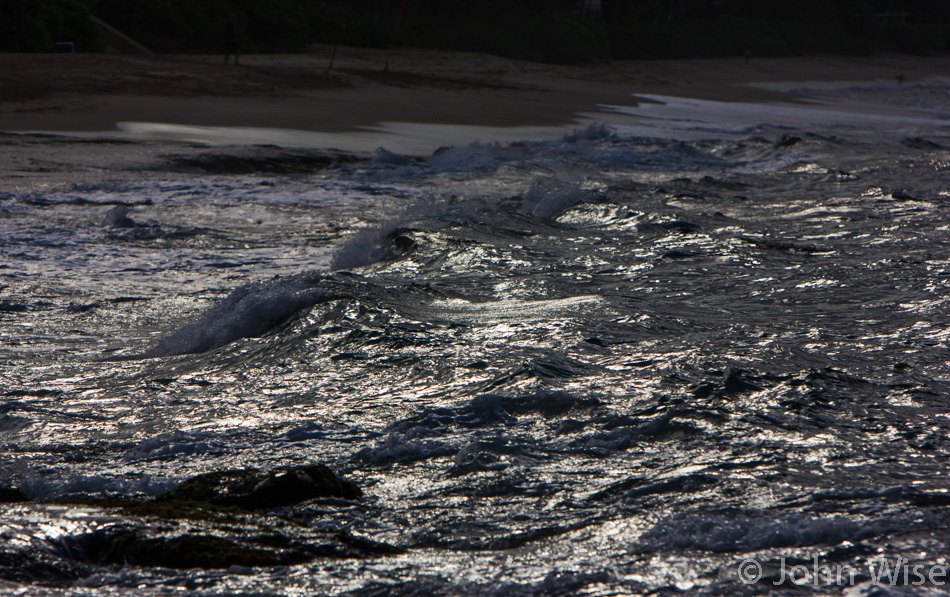
Liquid metal glistening in the late day sun. We have no schedule and no other places to visit; we will meander for the rest of the afternoon and see what we find. Oh, is that the call of Poseidon, or is it the voice of shave ice I hear beckoning us? Sure enough, the universe was transmitting signals to Caroline and me that we should revisit the Old Sugar Mill and order a lilikoi shave ice sitting on a scoop of vanilla ice cream with a splash of coconut milk on top. While I’ve never been harpooned by an angry sea god, I can state with some certainty that gluttony accentuated with Hawaiian shave ice is likely preferable.

At a beach, a small crowd had formed, looking like the Hawaiian version of the animal spotting groups in Yellowstone. Sure enough, they were watching a few sea turtles in the surf next to shore delivering a message from Poseidon, who told those present that disrespecting the all-powerful sea god would result in a heavy price to pay. The turtles whispered to us they could intercede on our behalf if we were to throw them some sugary yummies, and so instead of facing the wrath of His Holy Water Monster, we gave up the rest of our shave ice to the turtles. By now, I’m starting to wonder if those Heliconia berries we ate earlier were some kind of psychedelic. Okay, full stop. Do you really think we fed those turtles our shave ice? Hell no, we didn’t care how dire those turtles made it sound.

The sky started turning overcast around the time that daylight was about to give way to sunset, so we headed back to the hotel in a light rain and were offered a rainbow in place of a glorious sunset; it would have to do. Remember my dissing of people who do the tourist gig and lay on the beach in the sun, go to the pool, and hang out at the bar? Well, we went back to our room, changed clothes, and hit the hot tub before heading out for dinner again at the Kahuku Grill for some more Fire in Paradise burgers. A fulfilling John-and-Caroline kind of touristy day was had.
The day ends with me writing the notes that would become this blog entry while Caroline sits on the balcony in a light breeze, reading about Hawaiian history and knitting.